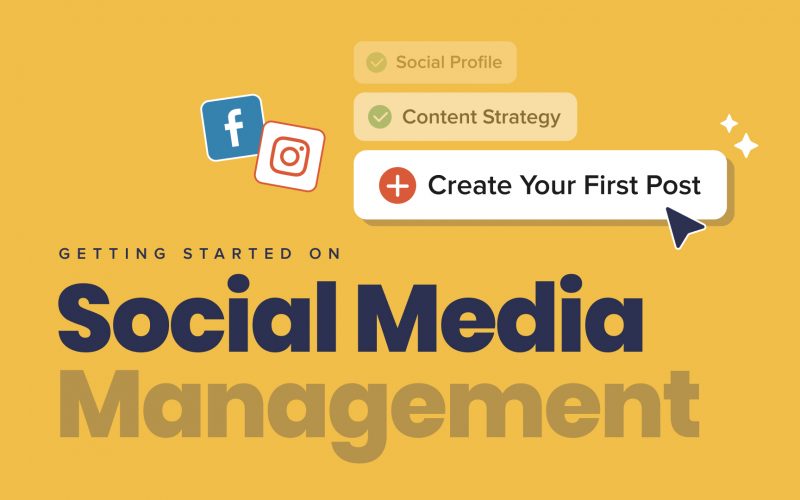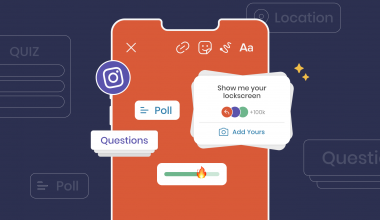With the rise of social media, businesses have to adapt their strategies to include a social media presence. It can be easy to undermine social media management. For one, many assume that it’s just opening an account and occasional postings on social media platforms. But behind the posts, are a plethora need of creative juices and strategic planning.
This article will tell you exactly How to get started on Social Media Management.
What is Social Media Management?
Social Media Management encapsulates basically every single process that has to do with social media, the whole streamlined if you will. From the beginning, the planning and strategizing, to the execution and monitoring and finally the post-production which includes analyzing and reporting on the results.
Detailed social media management tasks and responsibilities will look something like this:
- Discover anticipates and keeps up to date with social media trends
- Brainstorm content
- Plan and strategize
- Create, design, schedule and publish the content
- Copywriting
- Engage with followers, and reply to comments and DMs
- Monitor the engagements and mentions
- Grow and manage the community
- Collect, analyze and report the data and results
- Plan, optimize and execute marketing campaigns
How to get started on Social Media Management?
1. Determine your target audience
The first step to every marketing strategy is to know who are you marketing to. Without thorough market research, all your marketing efforts are of waste. In fact, this is not just the scratching-the-surface kind of research, not the “my customers are Gen-Z” or “teenagers that want this, this & this”.
No, no, no, you should dive deeper, dig deeper into the depths of their minds. What do they like or dislike? What are they currently facing? What do they care about? What could attract them? What do they do in their jobs/schools? What do they do outside of jobs/schools? What platforms do they hang out on and connect with their friends? Which sources do they get their daily news from? What medium shows higher authority to them?
Knowing this information can give you an edge to tap into your target audience’s emotions and perspectives. This way, you’ll know how to write to their attention, make them drop what they’re doing and listen to what you’ve had to say.
2. Decide on the social platforms
While the social media scene has been overwhelmed with a number of platforms, it’s never necessary for your business to be on every single platform at the same time. Being there where your target audience is is more effective than being everywhere. Check out our blog – How to Choose the Right Social Media for Your Business, if you want a headstart on deciding.
3. Find your brand voice & design your profiles
Your brand’s social profiles should comply with your brand voice, personality and vision. The brand voice is like a backbone that helps craft your copy – the pronoun (we or I?), the tone (fun, serious, mysterious or inspiring?) and your word choice (Hi y’all, Hello Fellows). This tone of voice helps to humanize and differentiates your brand from the overcrowded social platforms. Users connect better with humans than corporate robots.
Essentially, you should start crafting your Bio. Regardless of which social platforms you choose to manage, Facebook, Instagram or LinkedIn, each of them requires users to provide a short bio. Although there’s no one-size-fits-all formula for it, the general info you should write on your brand page bio is: “what you do” + “what benefits you provide” + “what makes you stand out” + CTA.
Next, you should allow your audience to instantly recognize your brand through the visuals which are your profile pictures, headers and backgrounds. Just like your bio, your profile picture and background should showcase your speciality and unique selling point through the brand colours and design elements.

Scoopatop beautifully presents their tagline, brand colour and main topics in their background picture.

While CUBEevo Advertising & Digital Agency showcase their year of experience & expertise in theirs.
4. Develop a content strategy
Content Creation is the utmost important task of social media management. It doesn’t matter what social platforms you use, an effective social media content strategy should have these 3 elements: relevancy, consistency and interaction. Here is a breakdown of them:
i) Relevancy
Social media is a place to engage and network. The users want to feel understood and connected. This is why relevancy is important to your content strategy. It means creating posts that are relevant to the current trends, time, location and industry your brand is in. Participation in trends shows that your brand is up-to-date with the current issues. It also humanized your brand because it shows that you care about what is happening around you.
ii) Consistency
Consistency is your continuous effort to provide valuable content to your audience. By valuable, we mean valuable content for your audience, what they want, not what you want.
Start by constructing your Content Pillars. They are the foundation of your content strategy that helps build your content plan and keep them consistent and goal-specific. They also help keep you in line and stay grounded in your subject matter so you won’t go off-topic. The Content Pillars are 3 to 5 main topics regarding your industry, services/products your brand offers and the pain points your customers face. With the Content Pillars, you’ll be able to differentiate yourself from the crowd, plan your content ahead of time and avoid content burnout.
You could identify and determine your Content Pillars by looking at your expertise, ideal customers, the problems you want to solve and your top-performing posts. 3 to 5 Content Pillars should be more than enough because you will include more subtopics under each pillar. These subtopics will be your posts. Here is an example to illustrate our point:
Content Pillars of a Creative Agency:
- Branding
- Logo Design
- Brand Guideline
- Brand Persona
- Web Design
- UX Design
- Coding
- Marketing
- Social Media Marketing
- SEO
- SEM
iii) Interaction
interactive posts could be in the form of large-scale marketing campaigns. For example, hashtag challenges and giveaways that happen 1 to 3 times per year. It can also be depending on the celebrations or promotions your brand have.
Get more content ideas from our other blogs:
- 10 Amazing Types of Social Media Contents For B2B Companies.
- Top 7 Creatively Unique Giveaways for Social Media Campaigns
5. Create a publishing schedule
To maintain your consistency as mentioned in the last point is to develop an editorial calendar or monthly planner. This calendar will help organize your team’s effort and know what to anticipate. Facebook Business Manager allows you to research the days and times when your followers are the most active. With these analytics, you can determine the best time to post to get the optimum engagements. For Facebook and Instagram, you could schedule your posts for free with Creative Studio. While for LinkedIn, you could try your hands on Hootsuite, Planable or Sproutsocial.
6. Manage your community
After Content Creation, Community Management is the second most important task of Social Media Management. This includes maintaining good relationships with online users by replying to comments and DMs. In fact, the latest trend is that users are growing to rely on social platforms for customer service.

7. Promote your profile
Congratulations on reaching this step! This means that you have succeeded in creating your business account, developing a content strategy and managing your community.
Now, your social media management responsibility has not ended yet. Being a digital marketer, you need to market and promote your social accounts to reach a bigger audience. Start by inserting your social links on your website, so the next time people visit your website, they could check out your social media as well.

Next, you should also share your post with related groups. This way you’ll reach a more specific group of users that are interested in your content.

8. Track your analytics
Last but not least, monitor your performance as you go. Some of the key indicators are reach, impression, engagements and number of followers. Social media is a trial-and-error territory. There’s no absolute right or wrong. The strategy that works this month, might not work next month. Therefore, you should always be brave in trying new ideas. Of course, there are actually some foolproof ways to increase engagement.
Read our blogs to learn more about it:
- How To Optimize Your Facebook Page
- Awesome Content Ideas to Introduce Your New Brand on Instagram
- A Useful Guide To Instagram Story
- How to Choose the Right Social Media for Your Business
Whether you’re doing it in-house or outsourcing to a digital agency, it can be quite daunting and stressful to manage the social account by one person, let alone those big brands with numerous social profiles and campaigns. A typical social media team would have a social media manager, project executive, designer, copywriter, and marketing strategist depending on your needs and budget. If these seem too overwhelming for you, perhaps it’s time to engage a digital marketing agency to get this done professionally.










